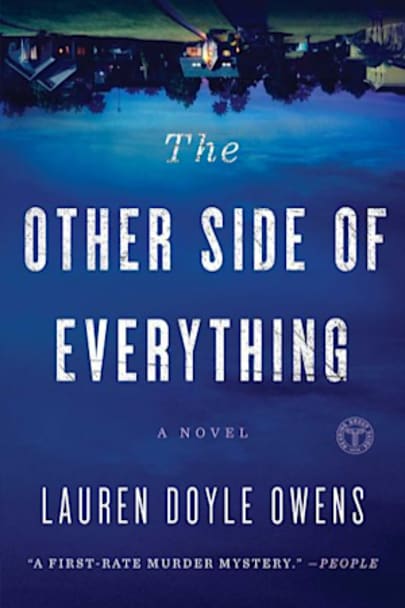” For] fans of crime fiction wanting literary flair and emotional depth.” –Publishers Weekly, starred review Laura Lippman meets Megan Abbott in this suspenseful literary debut about three generations of neighbors whose lives intersect in the aftermath of a crime. Bernard White is a curmudgeonly widower who has lived in Seven Springs, Florida for decades and has kept to himself since his wife … to himself since his wife passed. When his neighbor is murdered, he emerges from his solitude to reconnect with his fellow octogenarians. These connections become a literal lifeline as a second, and then a third, elderly woman is murdered, and “the originals” as they call themselves, realize that they are being targeted.
Amy Unger is an artist and cancer survivor whose emotional recovery has not been as successful as her physical one. After the woman next door is murdered, she begins to paint imagined scenes from the murder in an effort to cope with her own loss. But when her paintings prove to be too realistic, her neighbors grow suspicious, and she soon finds herself in the crosshairs of the police.
And then there’s Maddie Lowe, a teenage waitress whose mother recently abandoned the family. As Maddie struggles to keep her family together and maintain the appearance of normal teenage life, she finds herself drawn to the man the police say is the killer.
As they navigate their increasingly dangerous and tumultuous worlds, Bernard, Amy, and Maddie begin to uncover the connections between them, and the past and present, in a novel that ultimately proves the power of tragedy to spark renewal.more



From its opening pages, THE OTHER SIDE OF EVERYTHING is a compelling psychological thriller. But what sets it apart is a vividly drawn cast of disparate characters, strangers to each other, who in the wake of a series of murders in their neighborhood, unwittingly contribute in unique ways to bring about a murderer’s downfall. Slow burning and intensely layered, this story is a haunting mystery that reveals the tenacity of the human spirit not only to survive but ultimately to believe—even in the face of tragedy and past losses—in the power of hope and the possibility of happiness.
Though I’ve authored two murder mysteries – one, more of a legal thriller, awaiting a publisher – the murder fiction genre never has particularly attracted me. I don’t need to be frightened; the real world is so full of scary stuff that I have all I can handle.
However, the world of literature offers a trove of books that treat murder in literary fashion. I think back on one by Joyce Carol Oates maybe three decades ago (don’t recall the title) that had a guy shoving his wife through a sliding glass door in a moment of passion, killing her. The motives of the characters took precedence over the violence. One became immersed in the protagonists and antagonists more than in the action.
Now comes The Other Side of Everything, which fits neatly into that category. The author, Lauren Doyle Owens, adroitly unfurls the characters, infusing them with a reality that causes us to identify with them, much like we might grow to understand a new neighbor (for good or ill) as our association with herm (my gender-neutral pronoun) progresses.
Maddie is a quirky 15-year-old whose mother has left, unannounced, her husband, daughter and the girl’s younger brother. Owens uses the classic fiction writing dictum of showing rather than telling in getting us to fathom her. The author never spells out the pain Maddie is suffering. Instead, it becomes jarringly real when the teen begins cutting her thighs, later shoving a needle under a thumbnail, to inflict physical torture as a way of blotting out the emotional pain.
As for the violence, we are told about the murders of elderly women in the community, and given real descriptions of the surmised methods, but it’s all after the fact; we don’t get a blow-by-blow narration. The suspense is in wondering about the perpetrator, and what hiser (gender-neutral) motive is. Perhaps even more compelling is the tension over relationships, romantic and platonic, that develop between pairs of both young and old.
Owens, only in her 30s (but a cancer survivor), exhibits a remarkable capacity for empathy in realizing the feelings of persons generations apart. The book is a touching portrayal of the universality of the human experience.
A graduate of Florida International University’s MFA program, Owens has produced a stellar debut novel. Publishers Weekly gave the book a starred review, encapsulating it thusly: “A tense, rich debut … (for) fans of crime fiction wanting literary flair and emotional depth.”
Owens is a novelist whose career is well-worth following.
a twisty way around a couple of murders-good writing, interesting characters, good sense of place.